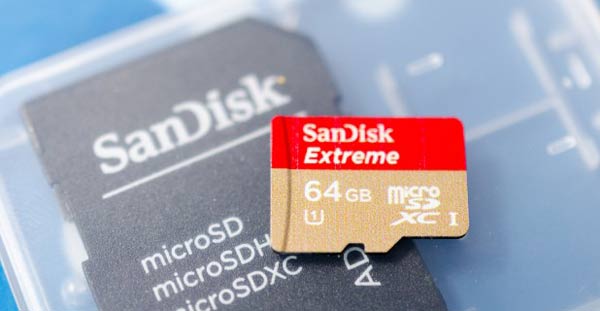Flash storage specialist and inventor of the micro-SD card, SanDisk, has launched a new range of Extreme micro-SDHC and micro-SDXC UHS-I memory cards. These speedy little memory cards offer capacities up to 64GB and read and write speeds of up to 80MB/s and 50MB/s respectively. SanDisk says the new memory cards are "the ideal companions for users who want fast expanded memory for the newest smartphones, tablets and cameras".

SanDisk's new micro-SDXC is rated as both Speed Class 10 and designated a new class; "UHG Speed Class 1" or U1 for short. The high speeds on offer complement the higher processing speeds of the latest smartphones, cameras and camcorders "allowing faster shot-to-shot performance, rapid data transfer, fast action photography, continuous burst mode and quick file transfers" as well as a great, fast storage upgrade for your micro-SD compatible smartphone or tablet.
"Most high-end smartphones are now driven by high-speed quad-core processors, which deliver Full HD content and applications to large, high-resolution external displays," said Stuart Robinson, director, handset component technologies service, Strategy Analytics. "Such applications require high memory bandwidth which is ideal for the SanDisk Extreme micro-SDXC card, the world's fastest micro-SDXC memory solution."
These new memory cards are available worldwide now, with capacities available as follows; 16GB, 32GB and 64GB. Potential buyers should note that the 16GB versions offer significantly lower write speeds; "Up to 80/30MB/s read/write speed (16 GB)". The 32GB and 64GB cards offer up to 80/50MB/s read/write speeds.
The waterproof, shockproof, heat resistant (operating temperatures range from -13 to 185 degrees Fahrenheit or -25ºC to 85 ºC), magnet proof and x-ray proof memory storage cards come with a lifetime limited warranty. If you take your mobile device to the mountains ocean or desert, "even if your device doesn't survive, your SanDisk memory card will." An adapter is supplied with all cards to offer size compatibility with full size SD/SDHC/SDXC supporting devices. SanDisk also offer free RescuePro Deluxe data recovery software, an undelete utility. Prices start from £25 for the 16GB memory cards.













